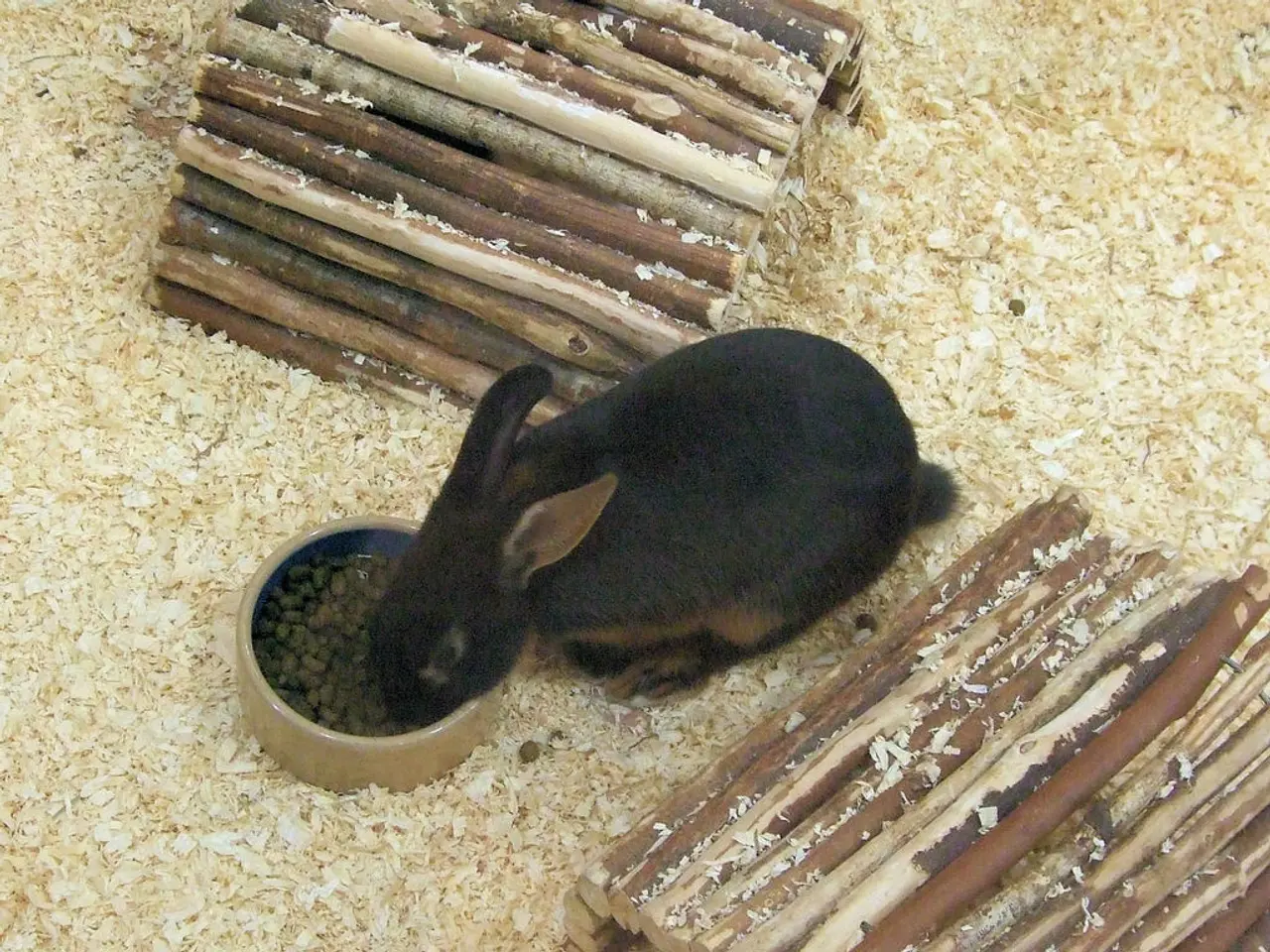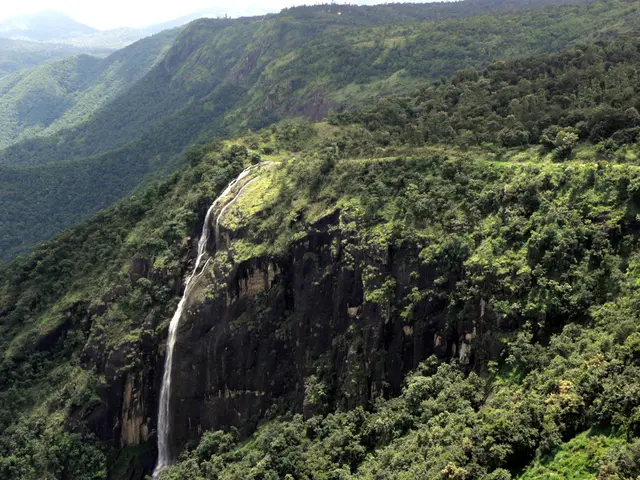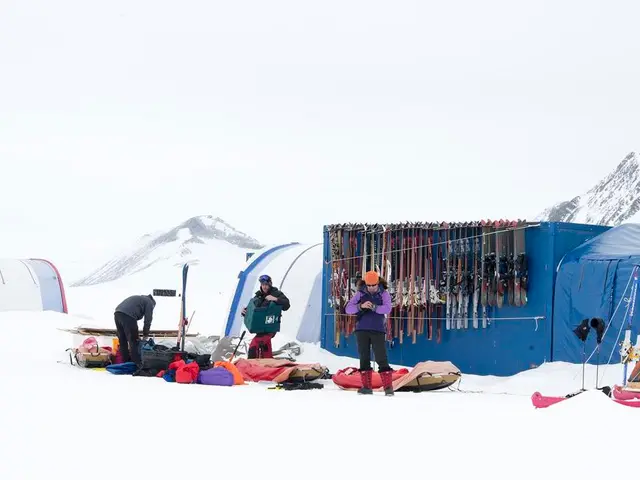Inspiring Strategies to Blend Narrative and Outdoor Play for a Sense of Awe in Nature
Children's playtime in the great outdoors can be more than just a simple game of tag or a run through the park. By embracing innovative approaches, we can turn our gardens and local green spaces into immersive storytelling playgrounds that stimulate creativity, foster a deeper connection with nature, and nurture a lifelong appreciation for the outdoors.
Nature-Based Storytelling
Incorporating the natural environment into storytelling can enhance children's connection with wildlife while developing their storytelling skills. Wind through trees and babbling brooks provide natural soundtracks that can enhance storytelling depth. Nature-based storytelling combines creative narratives with outdoor play, allowing children to create stories while exploring natural environments.
Practical Techniques
Several practical techniques can be employed to create sensory-rich, interactive, and self-directed nature-based activities. Here are some key methods:
Mud Kitchen Play
Setting up a mud kitchen with natural materials (soil, water, leaves) and kitchen tools allows children to invent stories and scenarios through imaginative pretend play. This tactile experience enhances creativity and sensory development while enabling narrative construction through play.
Story Stones and Nature Props
Using natural objects like stones, leaves, and bark as storytelling prompts or physical story markers can anchor stories outdoors and invite children to participate actively. For example, Story Time in Enchanted Woods uses Story Stones along with nature-based stories and follow-up sensory activities to deepen engagement and imagination.
Leaf and Bark Rubbings for Texture Inspiration
Encouraging children to make rubbings of leaves and bark with crayons introduces texture and pattern concepts and can serve as a creative launchpad for storytelling linked to natural elements.
Self-Directed Collaborative Play
Allowing children freedom to create their own stories by building dens, rafts, bridges, or villages from natural materials encourages problem-solving, teamwork, and imaginative narratives based on real-world challenges found in nature.
Nature-Based Storytelling Workshops
Facilitating guided storytelling sessions outdoors, such as the “Story Seed” workshop model, integrates storytelling craft with the natural environment in playgrounds or parks, fostering immersion and narrative connection to place.
Nature Crafts that Become Story Props
Activities where children collect natural items to build habitats or crafts (e.g., roly poly bug homes, sundials) enable them to weave stories around the creations and the life cycles observed, combining science, art, and narrative learning in an outdoor context.
Enhancing Outdoor Storytelling
Beyond these practical techniques, there are numerous ways to further enrich outdoor storytelling experiences:
- Varying wind intensities can build story tension - soft breezes might signal peaceful moments while stronger gusts indicate approaching adventure.
- Building magical pathways with painted stepping stones that connect different story elements and encourage physical movement during adventures can enhance outdoor storytelling.
- Rustling leaves create opportunities for mystery and suspense in outdoor stories.
- Position tree stumps at varying heights to accommodate different ages and create visual interest in your outdoor reading space.
- Pinecones and leaves can be crafted into unique woodland creature characters that become central figures in outdoor stories.
- Children can listen to bird songs to create character voices and personalities, translating calls into dialogue-driven stories.
- Different weather conditions provide unique storytelling opportunities.
- Miniature fairy houses using natural materials like twigs and moss, developed with detailed backstories for fairy inhabitants, can transform your backyard into a fairy tale world.
Combining Storytelling with Exploration
By encouraging children to become both storytellers and explorers, we can nurture a lifelong appreciation for the outdoors that extends far beyond childhood. Combine nature scavenger hunts with storytelling to spark creativity and encourage outdoor exploration. Nature provides endless inspiration for stories waiting to unfold.
Each found item unlocks the next chapter of an unfolding story, with clues written in character voices. Design themed village areas in garden spaces to foster complex storylines. Winter snowy landscapes encourage crystalline storytelling with snow sculptures and ice treasure hunts, teaching themes of adaptation and survival.
In summary, practical, innovative nature-based storytelling playgrounds blend sensory interaction, physical construction and role play, narrative anchoring with natural props, and facilitated storytelling workshops to create immersive, learner-led, and imaginative outdoor experiences for children.
- A mud kitchen in our backyard, filled with natural materials, can stimulate children's creativity while fostering a connection with the outdoors through imaginative play.
- To enrich a child's connection with wildlife, consider using natural objects like stones, leaves, and twigs as storytelling prompts or physical story markers during outdoor play.
- By encouraging children to collect natural items and craft sundials or roly poly bug homes, we can combine science, art, and storytelling in an outdoor setting.
- Crafting unique woodland creature characters from pinecones, leaves, and other natural materials can become central figures in children's outdoor stories, fostering a deeper connection with nature.
- Listening to bird songs and translating their calls into characters' dialogue can enhance a child's storytelling skills while nurturing a lifelong appreciation for the outdoors.




